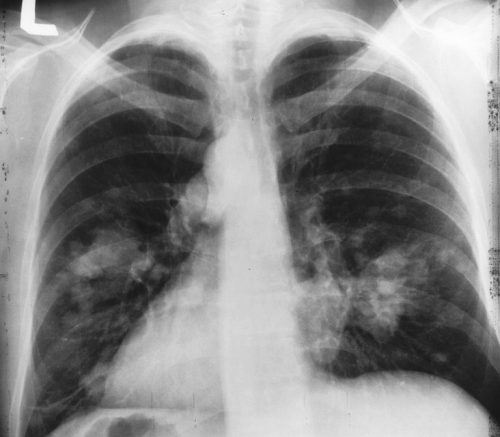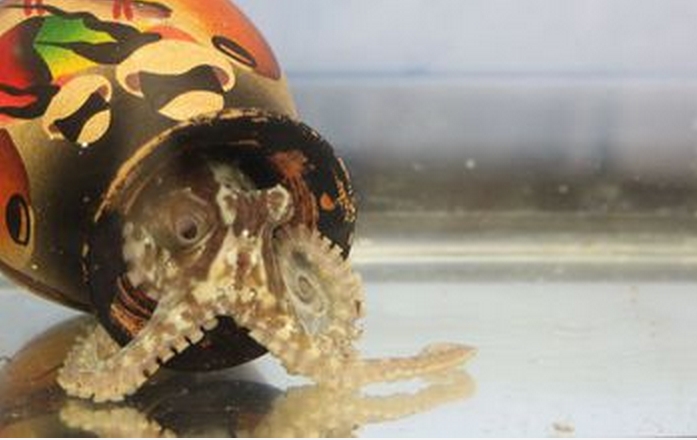(Boston) – A study led by researchers at Boston University School of Medicine (BUSM) has shown that a compound used in some skin creams may halt the progression of emphysema and reverse some of the damage caused by the disease.
When the compound Gly-His-Lys (GHK) was applied to lung cells from patients with emphysema, normal gene activity in altered cells was restored and damaged aspects of cellular function were repaired.
|
|
The study, which is published in BioMed Central’s open access journal Genome Medicine, also demonstrates the potential impact of using genomic technologies to identify new possible treatments for diseases using existing drugs and compounds.
Chronic obstructive pulmonary disease (COPD) is a chronic, progressive lung disease that comprises emphysema, small airway obstruction and/or chronic bronchitis leading to the loss of lung function. Tobacco smoke and other irritants cause oxidative stress and chronic inflammation, which over time destroys lung alveolar cells and results in emphysema. Without these cells, the lungs are not able to efficiently exchange oxygen for carbon dioxide, causing shortness of breath and low blood oxygen levels. According to the National Institutes of Health’s National Heart, Lung and Blood Institute (NHLBI), COPD is the third leading cause of death in the United States and results in approximately 120,000 deaths each year. While there are treatments and lifestyle changes that can help people cope with COPD, there currently is no cure and there are no effective therapies to reduce the rate of lung function decline that occurs as the disease progresses.
“Given the high costs, both direct and indirect, associated with COPD, there is an urgent need to identify novel approaches to treat the disease,” said Avrum Spira, MD, MSc, Alexander Graham Bell professor of medicine and chief of the division of computational biomedicine at BUSM, who was one of the study’s senior leaders. Spira also is a physician in the pulmonary, critical care and allergy department at Boston Medical Center.
Researchers took cells from lungs donated by patients undergoing a double lung transplant because their lungs were irrevocably damaged by COPD and found 127 genes had changes in activity as disease severity increased within the lung. The genes that showed increased activity included several that are associated with inflammation, such as those involved in signalling to B-cells (the immune system cells that make antibodies).
|
|
In contrast, the genes involved in maintaining cellular structure and normal cellular function, along with the growth factors TGFβ and VEGF, were down-regulated and showed decreased activity. Genes that control the ability of the cells to stick together (cell adhesion), produce the protein matrix that normally surrounds the cells and promote the normal association between lung cells and blood vessels were among the genes in this category.
Using genomic technologies and computational methods, the researchers identified genetic activity defects that occur as emphysema progresses and matched these defects with compounds that could reverse the damage. “Our study results showed that the way genes were affected by the compound GHK, a drug identified in the 1970s, was the complete opposite of the pattern we had seen in the cells damaged by emphysema,” said Marc Lenburg, PhD, associate professor in computational biomedicine and bioinformatics at BUSM and one of the study’s senior authors.
“What got us especially excited was that previous studies had shown that GHK could accelerate wound repair when applied to the skin,” said Joshua Campbell, PhD, a post-doctoral fellow working with Spira and Lenburg who served as the study’s first author. “This made us think that GHK could have potential as a therapy for COPD.”
“When we tested GHK on cells from the damaged lungs of smokers with COPD, we saw an improvement in the structure of their actin cytoskeleton and in cell adhesion, especially to collagen,” said James Hogg, MD, from the University of British Columbia and one of the study’s senior authors. “GHK also restored the ability of cells to reorganize themselves to repair wounds and construct the contractile filaments essential for alveolar tissue repair.”
|
|
GHK is a natural peptide found in human plasma, but the amount present decreases with age. While more testing needs to be done on its effects in COPD, these early results are very promising. Therapeutic studies with GHK in animal models of COPD are now underway with the ultimate goal of moving this compound into clinical trials. As more gene activity signatures are discovered, this method of matching drug to disease may provide a rapid method for discovering potential uses for existing drugs and compounds.
“Beyond the identification of a potential new COPD drug, the research team developed a cost-effective approach to study COPD at the molecular level across the entire lung, and then screen potential drug candidates,” said James Kiley, PhD, director of the NHLBI’s Division of Lung Diseases, who supported this work. “This work demonstrates the potential of using genomics data to drive clinical research.”
Source: Boston University Medical Center





